You can use beautiful font types to create a presentation. However, if audience members do not have the same font installed on their computers, the font will not display correctly when they view your presentation because PowerPoint substitutes an unknown font with what it determines as a similar type. This automatic matching process often leads to disastrous results. However, PowerPoint 2013 enables you to embed your preferred fonts into the presentation so that they appear as you intended regardless of whether the computer displaying the slideshow has that particular font installed.
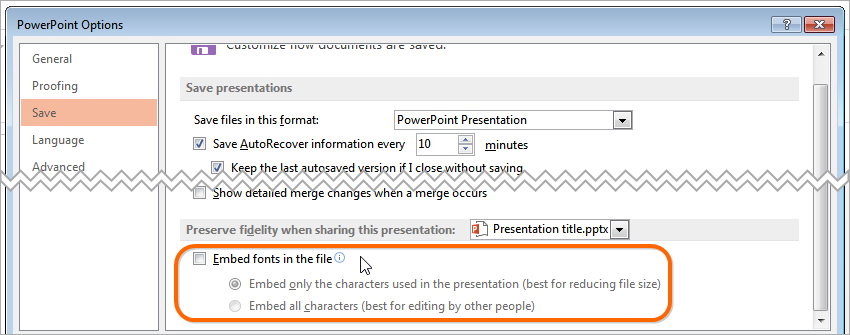
Please note that only TrueType and OpenType fonts can be embedded.
PowerPoint 2013 makes it very easy to add a screenshot—an image of your computer screen—to a slide:
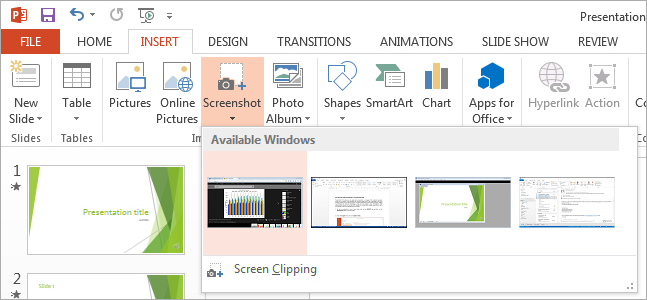
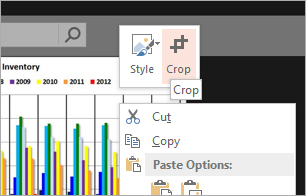
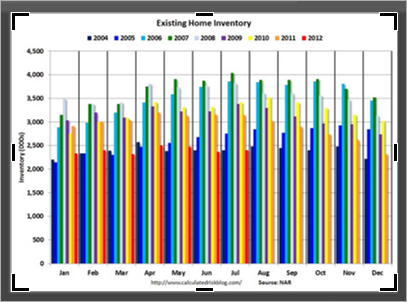
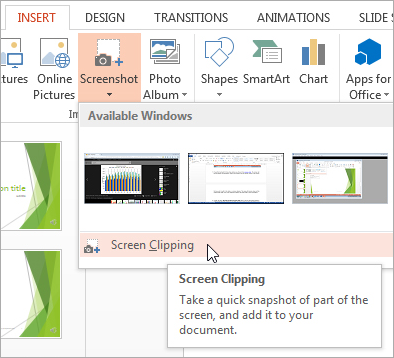
PowerPoint 2013 enables you to add one or more slides to your presentation from a different presentation that is either located on your computer or on a network without having to open the other file.

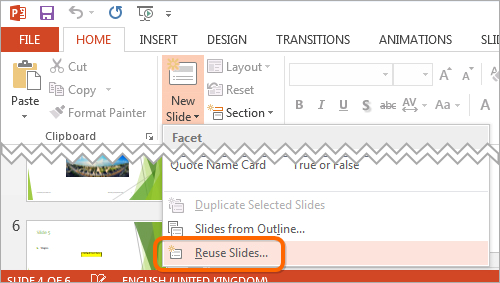
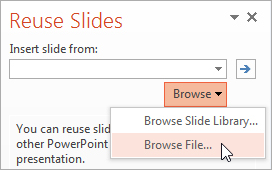
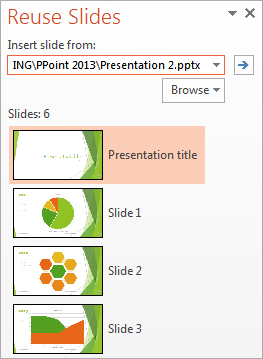
It is always a good idea to reduce the size of your PowerPoint presentation, particularly if your presentation contains large photos or images. Picture compression can quickly reduce the file size of one or all of your photos at the same time. File reduction is especially useful when you want to upload your presentation to a website or when you need to email your presentation to your audience.
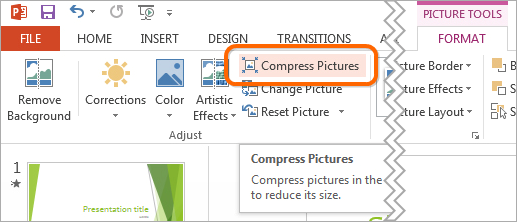
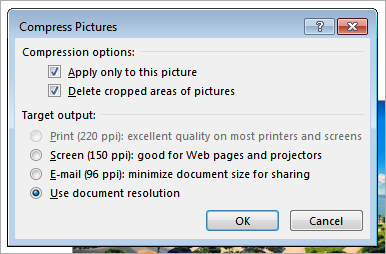
If you compressed your presentation and the file is still too large, repeat the steps above and tweak different options.
Slides with fewer words will always be more effective than slides with lots of words.
Your worst-case scenario is that you present a slide with lots of words. You stand at the front of the room and start talking. You are putting the subject in context. You deliver a 45-second overview that lets your audience understand the big picture. But they haven’t heard a word that you’ve spoken because they’ve been reading your slide. At the point where you start talking at the detail level, your audience has no idea what you’re talking about because they didn’t hear you put the topic in context.
The purpose of the words – and images – on your slides is to help members of the audience get an overview, as well as small bites of detailed or summary data. Your text and images help them get organized. Your slide’s words should be traffic signs and not long expositions. Be a person of few words.
If you’re delivering a PowerPoint training presentation entitled “Ten tips to increase your sales” then you can be certain that you have the attention of the people in the audience. You can put some extra words on your slides, and you probably won’t experience any bad results from your error. The people in your audience are motivated to learn. They will.
By contrast, if you work in the personnel department of a large corporation, and your presentation is called “Replacing the old HRM Process Procedure with the new HRM Procedure Process” then you can count on people dozing off, early and often. If you want to keep them motivated, then show them short slides. Make sure all of your bullet points “agree.” That is, make all of your bullet points verb phrases, or all of them noun phrases. Make all of these phrases roughly the same length. Make it as easy as possible for the audience to pay attention to the presentation.
If you’re presenting information that is complex or technical in nature, then try to craft bullet points that are one or two words long. Consider replacing too-long text with well-designed charts or graphics. Speak slowly so that people can take notes. Encourage them to ask questions.
Delivering complex information to a knowledgeable audience isn’t particularly difficult. Delivering complex information to a mixed audience of power-users and newbies can be a nightmare. Similarly, it’s very difficult to deliver information – even if it isn’t particularly complex information – to an audience in which only 50 percent of the people speak English as their first language.
With a mixed audience, you should put more words on each slide. And slow down the pace of your delivery. Read each bullet point, and then explain it. Encourage questions and comments.
A good target would be a three-word title plus five bullet points of four words each.
Try to use fewer words. If the topic of a slide is “Why should you buy our product?” then use “Benefits” as the title. And the bullet points could be:
Again, you’re creating street signs and putting your thoughts in context. You don’t have to present all of your information in writing on your slides.
Today we released version 1.2 of ShapeChef. Click here to download the installer for this free update.
ShapeChef is now fully compatible with PowerPoint 2016 for Windows. In particular, we have added support for the new Office UI themes so that ShapeChef seamlessly blends in with the Office 2016 user interface.

When right-clicking on a category header in the shape library, you will now see additional “Expand/Collapse” menu items that let you expand or collapse multiple categories with a single click.

Until this version, the ShapeChef application was installed to the current user’s “AppData\Roaming” (%AppData%) directory, and the user data (shapes, logs, etc.) were stored in the “Documents” (%UserProfile%\Documents) folder. From now on, all ShapeChef-related files are stored under “AppData\Local” (%LocalAppData%). Existing files will be moved automatically when you start ShapeChef 1.2 for the first time.
We have made this change to mitigate performance and synchronization problems in corporate environments that use roaming profiles and/or redirect user folders to network locations.